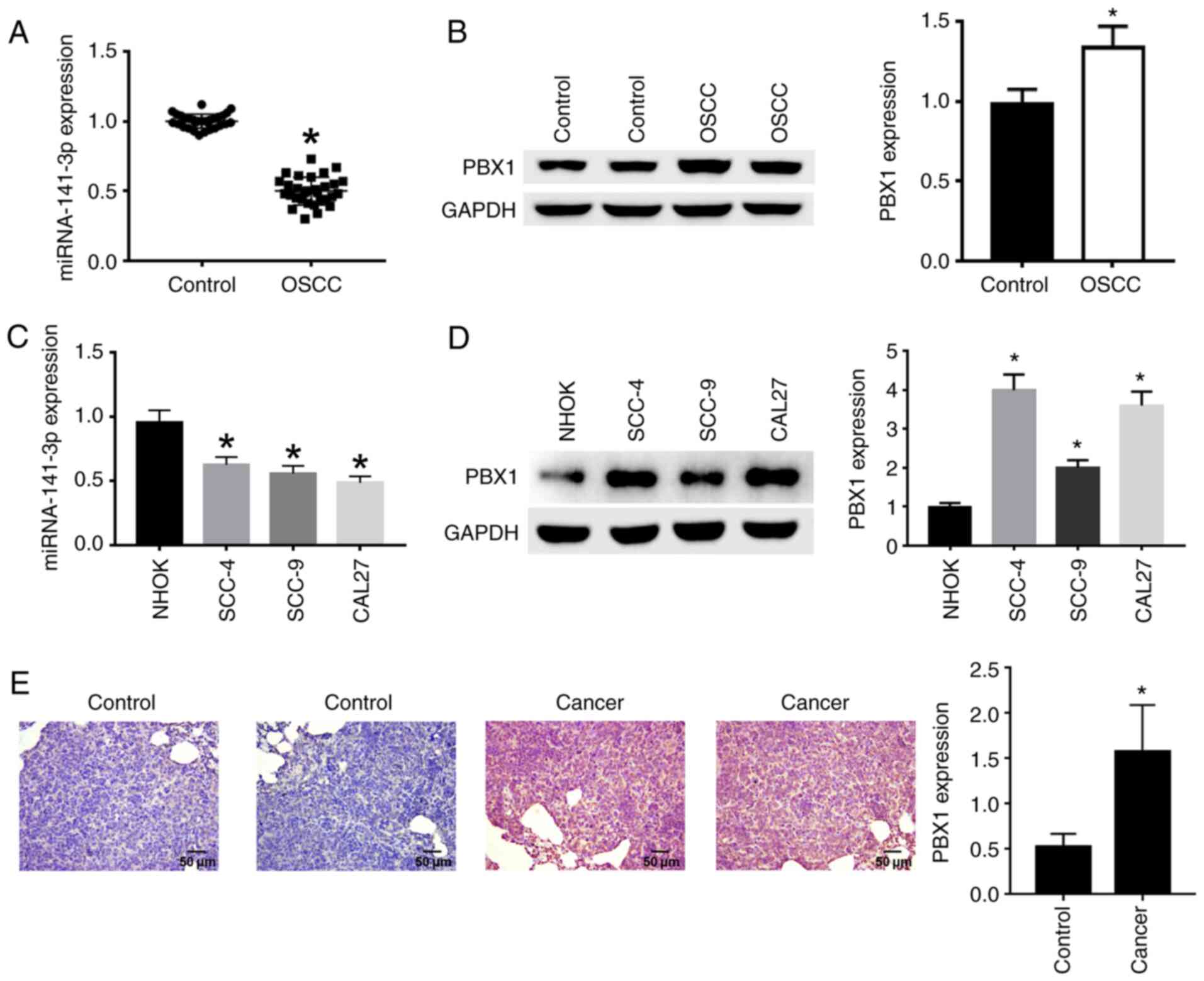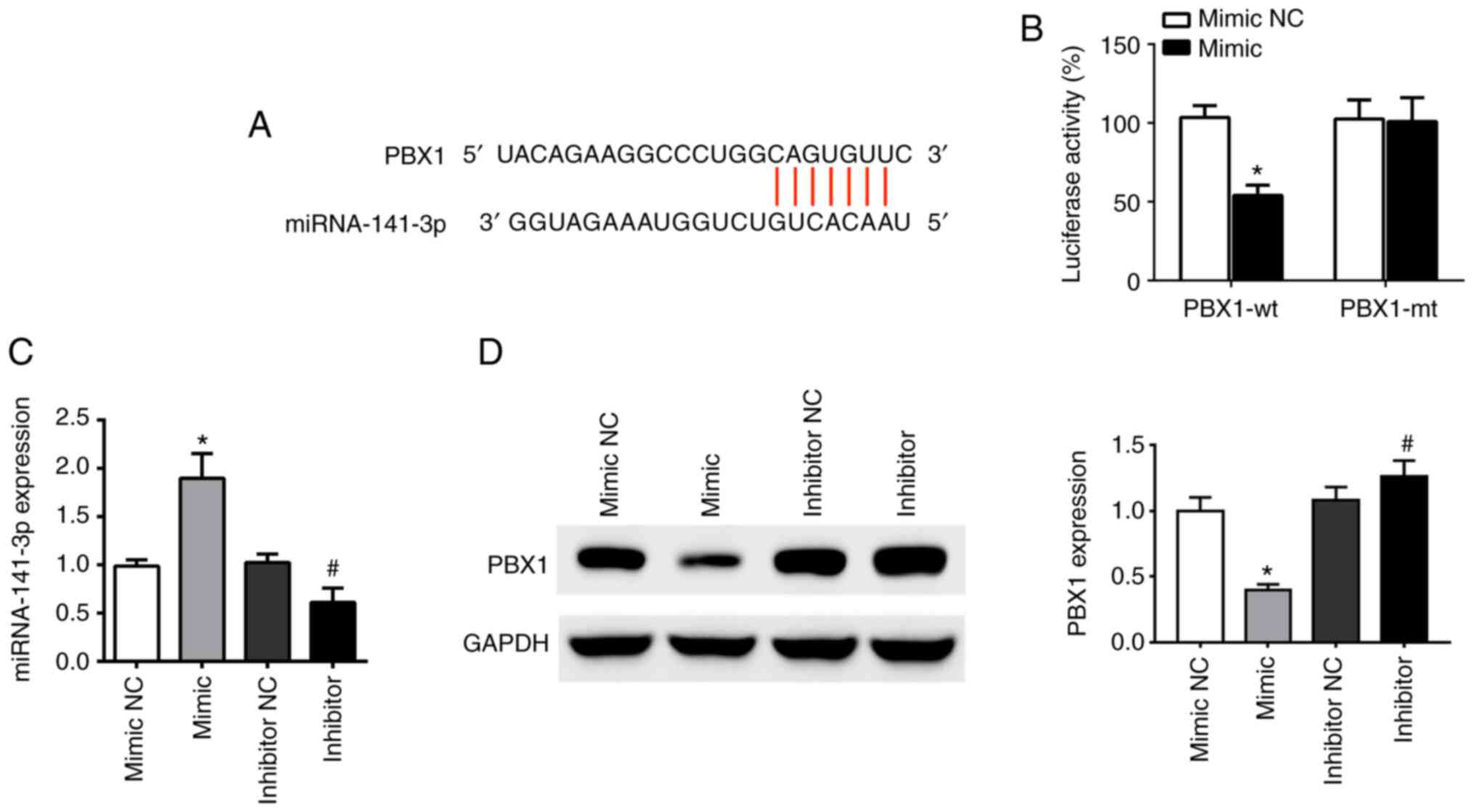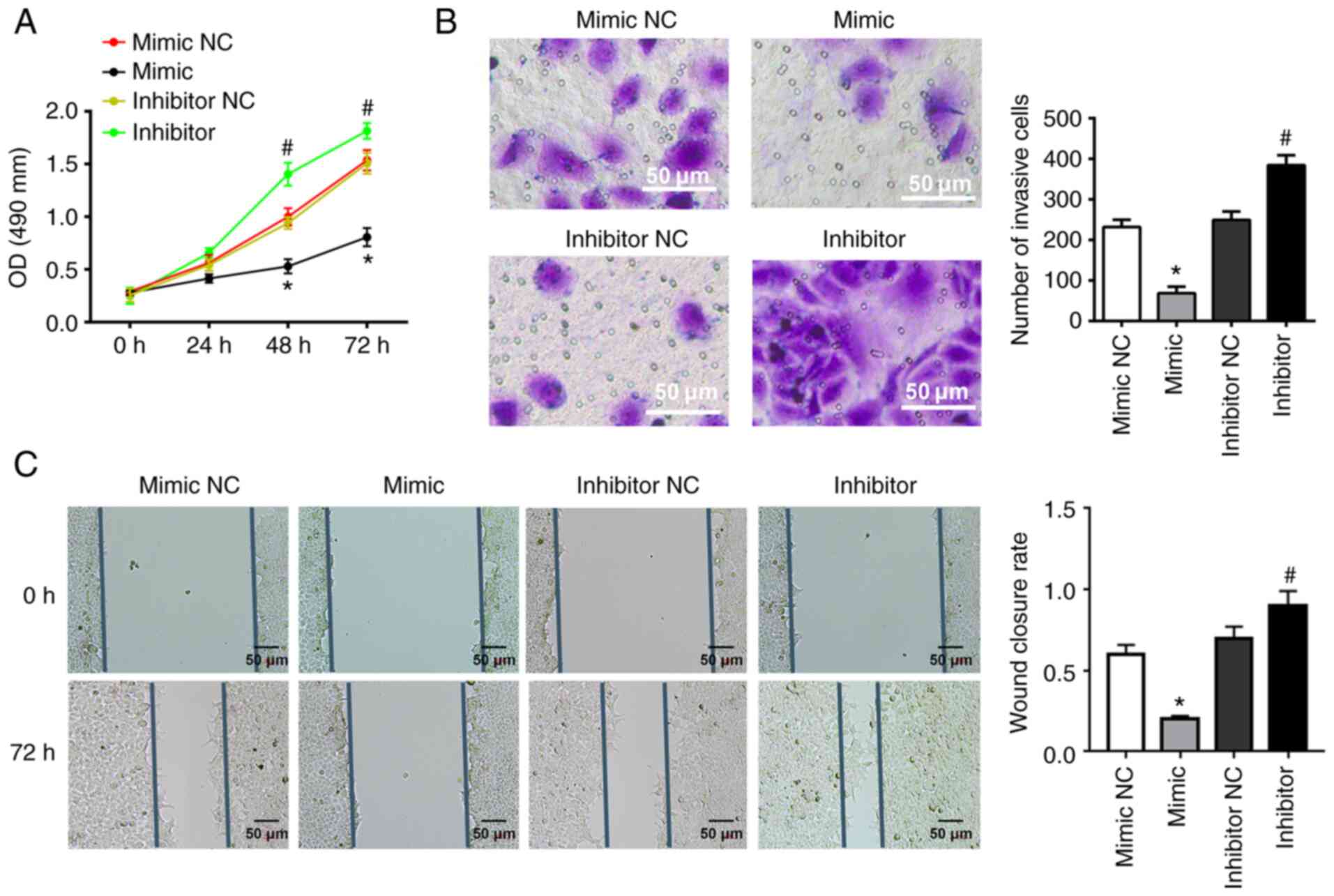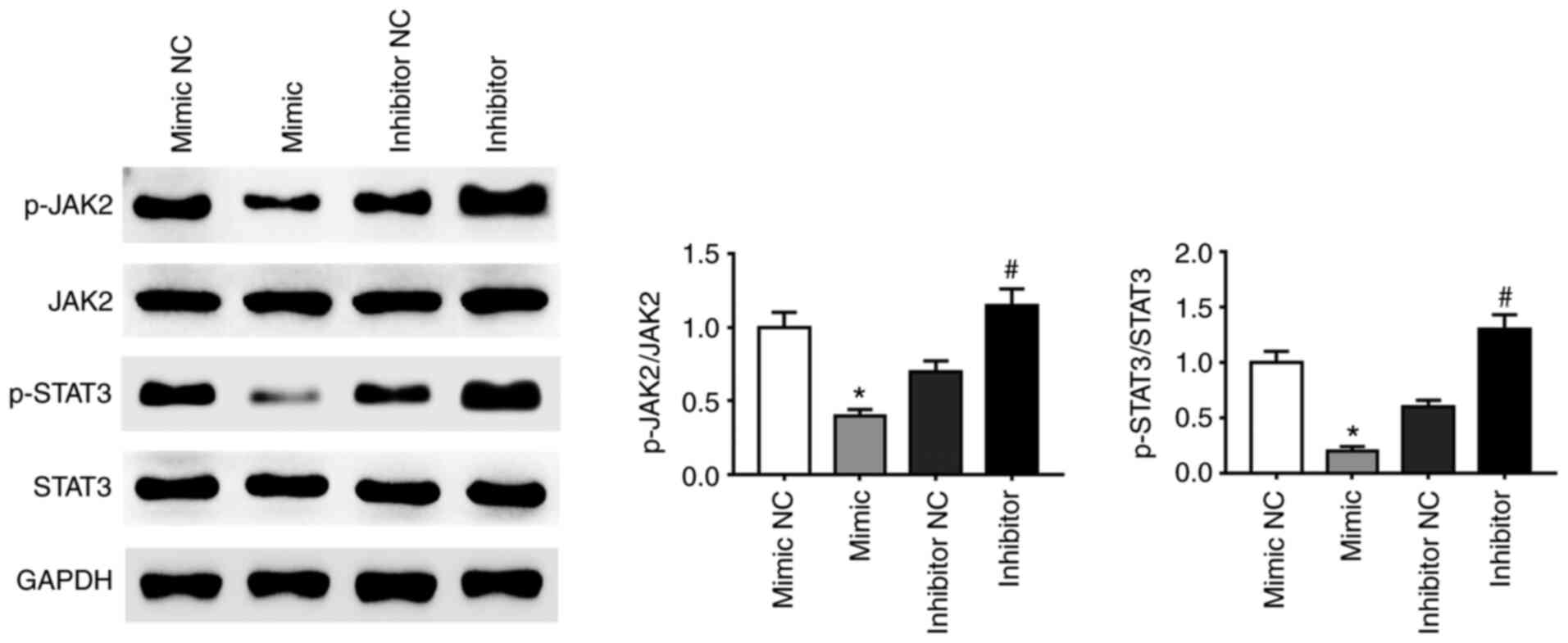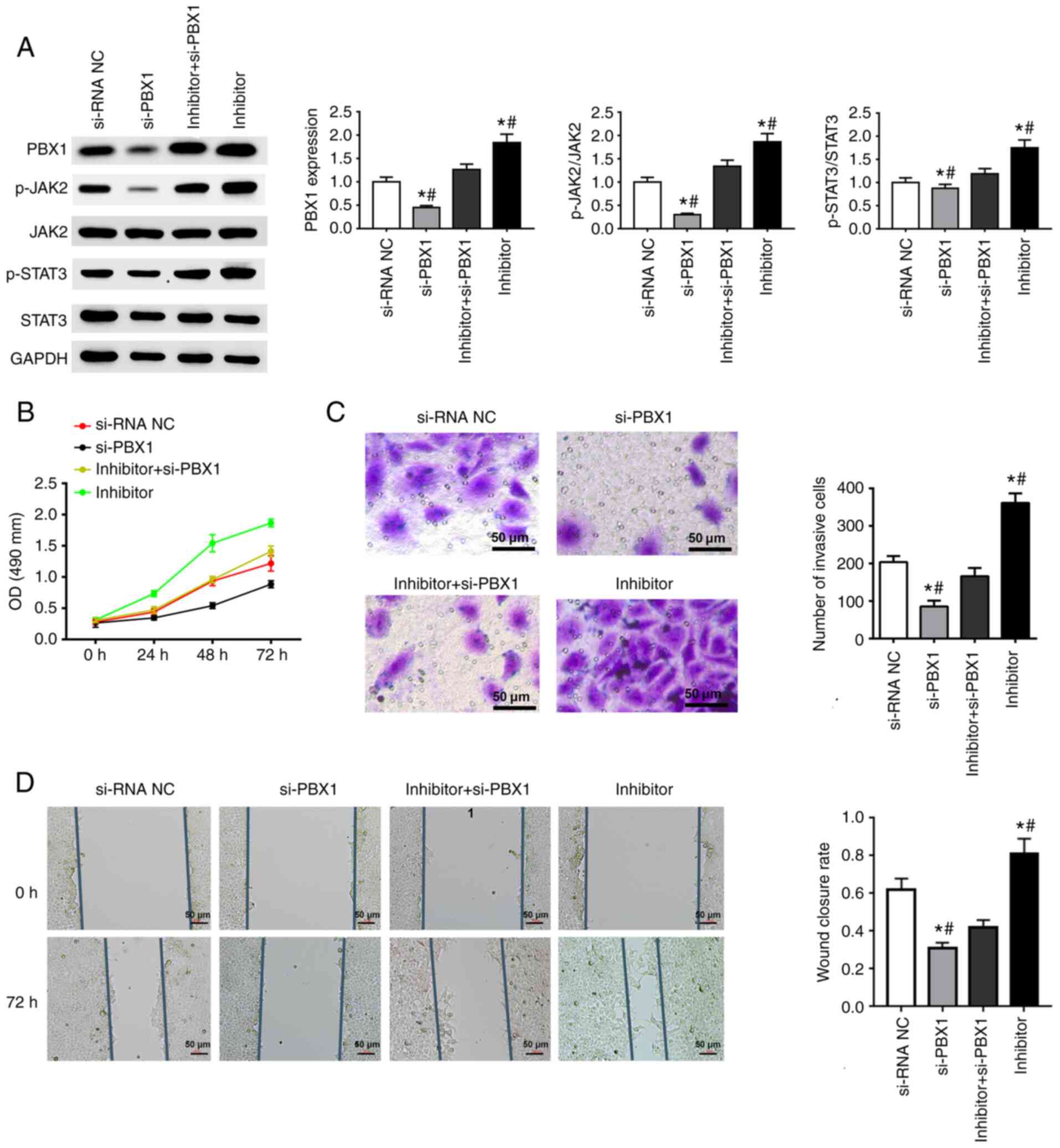|
1
|
Markopoulos AK: Current aspects on oral
squamous cell carcinoma. Open Dent J. 6:126–130. 2012.PubMed/NCBI View Article : Google Scholar
|
|
2
|
Wei J and Wu J, Xu W, Nie H, Zhou R, Wang
R, Liu Y, Tang G and Wu J: Salvianolic acid B inhibits glycolysis
in oral squamous cell carcinoma via targeting PI3K/AKT/HIF-1α
signaling pathway. Cell Death Dis. 9(599)2018.PubMed/NCBI View Article : Google Scholar
|
|
3
|
Early Breast Cancer Trialists'
Collaborative Group (EBCTCG). Adjuvant bisphosphonate treatment in
early breast cancer: Meta-analyses of individual patient data from
randomised trials. Lancet. 386:1353–1361. 2015.PubMed/NCBI View Article : Google Scholar
|
|
4
|
Kim SM, Jeong D, Min KK, Sang SL and Lee
SK: Two different protein expression profiles of oral squamous cell
carcinoma analyzed by immunoprecipitation high-performance liquid
chromatography. World J Surg Oncol. 15(151)2017.PubMed/NCBI View Article : Google Scholar
|
|
5
|
Radhika T, Jeddy N, Nithya S and
Muthumeenakshi RM: Salivary biomarkers in oral squamous cell
carcinoma-an insight. J Oral Biol Craniofac Res. 6 (Suppl
1):S51–S54. 2016.PubMed/NCBI View Article : Google Scholar
|
|
6
|
Sasahira T, Kirita T and Kuniyasu H:
Update of molecular pathobiology in oral cancer: A review. Int J
Clin Oncol. 19:431–436. 2014.PubMed/NCBI View Article : Google Scholar
|
|
7
|
Liu N, Zhang Z, Li L, Shen X, Sun B, Wang
R, Zhong H, Shi Q, Wei L, Zhang Y, et al: MicroRNA-181 regulates
the development of ossification of posterior longitudinal ligament
via Epigenetic modulation by targeting PBX1. Theranostics.
10:7492–7509. 2020.PubMed/NCBI View Article : Google Scholar
|
|
8
|
Platais C, Radhakrishnan R, Niklander
Ebensperger S, Morgan R, Lambert DW and Hunter KD: Targeting
HOX-PBX interactions causes death in oral potentially malignant and
squamous carcinoma cells but not normal oral keratinocytes. BMC
Cancer. 18(723)2018.PubMed/NCBI View Article : Google Scholar
|
|
9
|
He C, Wang Z, Zhang L, Yang L, Li J, Chen
X, Zhang J, Chang Q, Yu Y, Liu B and Zhu Z: A hydrophobic residue
in the TALE homeodomain of PBX1 promotes epithelial-to-mesenchymal
transition of gastric carcinoma. Oncotarget. 8:46818–46833.
2017.PubMed/NCBI View Article : Google Scholar
|
|
10
|
Risolino M, Mandia N, Iavarone F, Dardaei
L, Longobardi E, Fernandez S, Talotta F, Bianchi F and Pisati F:
Transcription factor PREP1 induces EMT and metastasis by
controlling the TGF-β-SMAD3 pathway in non-small cell lung
adenocarcinoma. Proc Natl Acad Sci USA. 111:E3775–E3784.
2014.PubMed/NCBI View Article : Google Scholar
|
|
11
|
Bromberg JF, Wrzeszczynska MH, Devgan G,
Zhao Y, Pestell RG, Albanese C and Darnell JE Jr: Stat3 as an
Oncogene. Cell. 98:295–303. 1999.PubMed/NCBI View Article : Google Scholar
|
|
12
|
Degboé Y, Rauwel B, Baron M, Boyer JF,
Ruyssen-Witrand A, Constantin A and Davignon JL: Polarization of
rheumatoid macrophages by TNF targeting through an IL-10/STAT3
mechanism. Front Immunol. 10(3)2019.PubMed/NCBI View Article : Google Scholar
|
|
13
|
Johnson DE, O'Keefe RA and Grandis JR:
Targeting the IL-6/JAK/STAT3 signalling axis in cancer. Nat Rev
Clin Oncol. 15:234–248. 2018.PubMed/NCBI View Article : Google Scholar
|
|
14
|
Wu J, Niu P, Zhao Y, Cheng Y, Chen W, Lin
L, Lu J, Cheng X and Xu Z: Impact of miR-223-3p and miR-2909 on
inflammatory factors IL-6, IL-1β, and TNF-α, and the
TLR4/TLR2/NF-κB/STAT3 signaling pathway induced by
lipopolysaccharide in human adipose stem cells. PLoS One.
14(e0212063)2019.PubMed/NCBI View Article : Google Scholar
|
|
15
|
Yu H, Lee H, Herrmann A, Buettner R and
Jove R: Revisiting STAT3 signalling in cancer: New and unexpected
biological functions. Nat Rev Cancer. 14:736–746. 2014.PubMed/NCBI View
Article : Google Scholar
|
|
16
|
Wang B, Liu T, Wu JC, Luo SZ, Chen R, Lu
LG and Xu MY: STAT3 aggravates TGF-β1-induced hepatic
epithelial-to-mesenchymal transition and migration. Biomed
Pharmacother. 98:214–221. 2018.PubMed/NCBI View Article : Google Scholar
|
|
17
|
Li YL, Wu LW, Zeng LH, Zhang ZY, Wang W,
Zhang C and Lin NM: ApoC1 promotes the metastasis of clear cell
renal cell carcinoma via activation of STAT3. Oncogene.
39:6203–6217. 2020.PubMed/NCBI View Article : Google Scholar
|
|
18
|
Chen B and Ling CH: Long noncoding RNA
AK027294 acts as an oncogene in non-small cell lung cancer by
up-regulating STAT3. Eur Rev Med Pharmacol Sci. 23:1102–1107.
2019.PubMed/NCBI View Article : Google Scholar
|
|
19
|
Devarajan E and Huang S: STAT3 as a
central regulator of tumor metastases. Curr Mol Med. 9:626–633.
2009.PubMed/NCBI View Article : Google Scholar
|
|
20
|
Zhou W, Bi X, Gao G and Sun L: miRNA-133b
and miRNA-135a induce apoptosis via the JAK2/STAT3 signaling
pathway in human renal carcinoma cells. Biomed Pharmacother.
84:722–729. 2016.PubMed/NCBI View Article : Google Scholar
|
|
21
|
Chen Y, Shao Z, Jiang E, Zhou X, Wang L,
Wang H, Luo X, Chen Q, Liu K and Shang Z: CCL21/CCR7 interaction
promotes EMT and enhances the stemness of OSCC via a JAK2/STAT3
signaling pathway. J Cell Physiol. 235:5995–6009. 2020.PubMed/NCBI View Article : Google Scholar
|
|
22
|
Lin XM, Chen H and Zhan XL: miR-203
regulates JAK-STAT pathway in affecting pancreatic cancer cells
proliferation and apoptosis by targeting SOCS3. Eur Rev Med
Pharmacol Sci. 23:6906–6913. 2019.PubMed/NCBI View Article : Google Scholar
|
|
23
|
Zhang CS, Lin Y, Sun FB, Gao J, Han B and
Li SJ: miR-409 down-regulates Jak-Stat pathway to inhibit
progression of liver cancer. Eur Rev Med Pharmacol Sci. 23:146–154.
2019.PubMed/NCBI View Article : Google Scholar
|
|
24
|
Hong YG, Xin C, Zheng H, Huang ZP, Yang Y,
Zhou JD, Gao XH, Hao L, Liu QZ, Zhang W and Hao LQ: miR-365a-3p
regulates ADAM10-JAK-STAT signaling to suppress the growth and
metastasis of colorectal cancer cells. J Cancer. 11:3634–3644.
2020.PubMed/NCBI View Article : Google Scholar
|
|
25
|
Bartel DP: MicroRNAs: Genomics,
biogenesis, mechanism, and function. Cell. 116:281–297.
2004.PubMed/NCBI View Article : Google Scholar
|
|
26
|
Yates L, Norbury C and Gilbert RC: The
long and short of microRNA. Cell. 153:516–519. 2013.PubMed/NCBI View Article : Google Scholar
|
|
27
|
Iorio MV, Ferracin M, Liu CG, Veronese A,
Spizzo R, Sabbioni S, Magri E, Pedriali M, Fabbri M, Campiglio M,
et al: MicroRNA gene expression deregulation in human breast
cancer. Cancer Res. 65:7065–7070. 2005.PubMed/NCBI View Article : Google Scholar
|
|
28
|
Kozaki K, Imoto I, Mogi S, Omura K and
Inazawa J: Exploration of tumor-suppressive microRNAs silenced by
DNA hypermethylation in oral cancer. Cancer Res. 68:2094–2105.
2008.PubMed/NCBI View Article : Google Scholar
|
|
29
|
Cai Z, Hao XY and Liu FX: MicroRNA-186
serves as a tumor suppressor in oral squamous cell carcinoma by
negatively regulating the protein tyrosine phosphatase SHP2
expression. Arch Oral Biol. 89:20–25. 2018.PubMed/NCBI View Article : Google Scholar
|
|
30
|
Arunkumar G, Deva Magendhra Rao AK,
Manikandan M, Prasanna Srinivasa Rao H, Subbiah S, Ilangovan R,
Murugan AK and Munirajan AK: Dysregulation of miR-200 family
microRNAs and epithelial-mesenchymal transition markers in oral
squamous cell carcinoma. Oncol Lett. 15:649–657. 2018.PubMed/NCBI View Article : Google Scholar
|
|
31
|
Shao Y, Qu Y, Dang S, Yao B and Ji M:
miR-145 inhibits oral squamous cell carcinoma (OSCC) cell growth by
targeting c-Myc and Cdk6. Cancer Cell Int. 13(51)2013.PubMed/NCBI View Article : Google Scholar
|
|
32
|
Della Vittoria Scarpati G, Calura E, Di
Marino M, Romualdi C, Beltrame L, Malapelle U, Troncone G, De
Stefano A, Pepe S, De Placido S, et al: Analysis of differential
miRNA expression in primary tumor and stroma of colorectal cancer
patients. Biomed Res Int. 2014(840921)2014.PubMed/NCBI View Article : Google Scholar
|
|
33
|
Verrando P, Capovilla M and Rahmani R:
Trans-nonachlor decreases miR-141-3p levels in human melanocytes in
vitro promoting melanoma cell characteristics and shows a
multigenerational impact on miR-8 levels in Drosophila.
Toxicology. 368-369:129–141. 2016.PubMed/NCBI View Article : Google Scholar
|
|
34
|
Li M, Huang H, Cheng F, Hu X and Liu J:
miR-141-3p promotes proliferation and metastasis of nasopharyngeal
carcinoma by targeting NME1. Adv Med Sci. 65:252–258.
2020.PubMed/NCBI View Article : Google Scholar
|
|
35
|
Ishibashi O, Akagi I, Ogawa Y and Inui T:
miR-141-3p is upregulated in esophageal squamous cell carcinoma and
targets pleckstrin homology domain leucine-rich repeat protein
phosphatase-2, a negative regulator of the PI3K/AKT pathway.
Biochem Biophys Res Commun. 501:507–513. 2018.PubMed/NCBI View Article : Google Scholar
|
|
36
|
Hou X, Yang L, Jiang X, Liu Z, Li X, Xie
S, Li G and Liu J: Role of microRNA-141-3p in the progression and
metastasis of hepatocellular carcinoma cell. Int J Biol Macromol.
128:331–339. 2019.PubMed/NCBI View Article : Google Scholar
|
|
37
|
Qiu X, Ye Q, Sun M, Wang L, Tan Y and Wu
G: Saturated hydrogen improves lipid metabolism disorders and
dysbacteriosis induced by a high-fat diet. Exp Biol Med (Maywood).
245:512–521. 2020.PubMed/NCBI View Article : Google Scholar
|
|
38
|
Wu Y, Yuan T, Wang WW, Ge PL, Gao ZQ,
Zhang G, Tang Z, Dang XW, Zhao YF, Zhang JY and Jiang GZ: Long
noncoding RNA HOST2 promotes epithelial-mesenchymal transition,
proliferation, invasion and migration of hepatocellular carcinoma
cells by activating the JAK2-STAT3 signaling pathway. Cell Physiol
Biochem. 51:301–314. 2018.PubMed/NCBI View Article : Google Scholar
|
|
39
|
Steeg PS: Tumor metastasis: Mechanistic
insights and clinical challenges. Nat Med. 12:895–904.
2006.PubMed/NCBI View
Article : Google Scholar
|
|
40
|
Xu W, Sun D, Wang Y, Zheng X, Li Y, Xia Y
and Teng Y: Inhibitory effect of microRNA-608 on lung cancer cell
proliferation, migration, and invasion by targeting BRD4 through
the JAK2/STAT3 pathway. Bosn J Basic Med Sci. 20:347–356.
2019.PubMed/NCBI View Article : Google Scholar
|
|
41
|
Huang WC, Chan SH, Jang TH, Chang JW, Ko
YC, Yen TC, Chiang SL, Chiang WF, Shieh TY, Liao CT, et al:
miRNA-491-5p and GIT1 serve as modulators and biomarkers for oral
squamous cell carcinoma invasion and metastasis. Cancer Res.
74:751–564. 2014.PubMed/NCBI View Article : Google Scholar
|
|
42
|
Nagai H, Hasegawa S, Uchida F, Terabe T,
Ishibashi Kanno N, Kato K, Yamagata K, Sakai S, Kawashiri S, Sato
H, et al: MicroRNA-205-5p suppresses the invasiveness of oral
squamous cell carcinoma by inhibiting TIMP-2 expression. Int J
Oncol. 52:841–850. 2018.PubMed/NCBI View Article : Google Scholar
|
|
43
|
Feng X, Luo Q, Wang H, Zhang H and Chen F:
MicroRNA-22 suppresses cell proliferation, migration and invasion
in oral squamous cell carcinoma by targeting NLRP3. J Cell Physiol.
233:6705–6713. 2018.PubMed/NCBI View Article : Google Scholar
|
|
44
|
Korpal M and Kang Y: The emerging role of
miR-200 family of microRNAs in epithelial-mesenchymal transition
and cancer metastasis. RNA Biol. 5:115–119. 2008.PubMed/NCBI View Article : Google Scholar
|
|
45
|
Renthal NE, Williams KC and Mendelson CR:
MicroRNAs-mediators of myometrial contractility during pregnancy
and labour. Nat Rev Endocrinol. 9:391–401. 2013.PubMed/NCBI View Article : Google Scholar
|
|
46
|
Olsen PH and Ambros V: The lin-4
regulatory RNA controls developmental timing in Caenorhabditis
elegans by blocking LIN-14 protein synthesis after the initiation
of translation. Dev Biol. 216:671–680. 1999.PubMed/NCBI View Article : Google Scholar
|
|
47
|
Mao S, Lu Z, Zheng S, Zhang H, Zhang G,
Wang F, Huang J, Lei Y, Wang X, Liu C, et al: Exosomal miR-141
promotes tumor angiogenesis via KLF12 in small cell lung cancer. J
Exp Clin Cancer Res. 39(193)2020.PubMed/NCBI View Article : Google Scholar
|
|
48
|
Chen X, Lou N, Anming R, Qiu B, Yun Y,
Wang X, Du Q, Ruan H, Han W, Wei H, et al: miR-224/miR-141 ratio as
a novel diagnostic biomarker in renal cell carcinoma. Oncol Lett.
16:1666–1674. 2018.PubMed/NCBI View Article : Google Scholar
|
|
49
|
Moriya Y, Nohata N, Kinoshita T, Mutallip
M, Okamoto T, Yoshida S, Suzuki M, Yoshino I and Seki N: Tumor
suppressive microRNA-133a regulates novel molecular networks in
lung squamous cell carcinoma. J Hum Genet. 57:38–45.
2012.PubMed/NCBI View Article : Google Scholar
|
|
50
|
Janowski BA, Younger ST, Hardy DB, Ram R,
Huffman KE and Corey DR: Activating gene expression in mammalian
cells with promoter-targeted duplex RNAs. Nat Chem Biol. 3:166–173.
2007.PubMed/NCBI View Article : Google Scholar
|
|
51
|
Khraiwesh B, Arif MA, Seumel GI, Ossowski
S, Weigel D, Reski R and Frank W: Transcriptional control of gene
expression by microRNAs. Cell. 140:111–122. 2010.PubMed/NCBI View Article : Google Scholar
|
|
52
|
Liu Y, Ding Y, Huang J, Wang S, Ni W, Guan
J, Li Q, Zhang Y, Ding Y, Chen B and Chen L: miR-141 suppresses the
migration and invasion of HCC cells by targeting Tiam1. PLoS One.
9(e88393)2014.PubMed/NCBI View Article : Google Scholar
|
|
53
|
Ahn JH, Choi YS and Choi JH: Leptin
promotes human endometriotic cell migration and invasion by
up-regulating MMP-2 through the JAK2/STAT3 signaling pathway. Mol
Hum Reprod. 21:792–802. 2015.PubMed/NCBI View Article : Google Scholar
|
|
54
|
Liu F, Zhang T, Zou S, Jiang B and Hua D:
B7-H3 promotes cell migration and invasion through the
Jak2/Stat3/MMP9 signaling pathway in colorectal cancer. Mol Med
Rep. 12:5455–5460. 2015.PubMed/NCBI View Article : Google Scholar
|
|
55
|
Wang Y, Jing Y, Ding L, Zhang X, Song Y,
Chen S, Zhao X, Huang X, Pu Y, Wang Z, et al: Epiregulin reprograms
cancer-associated fibroblasts and facilitates oral squamous cell
carcinoma invasion via JAK2-STAT3 pathway. J Exp Clin Cancer Res.
38(274)2019.PubMed/NCBI View Article : Google Scholar
|
|
56
|
Yu D, Ma Y, Feng C, Ma Z, Guo J, Chen H,
He T, Guo J, Sun X, Qin Q, et al: PBX1 increases the
radiosensitivity of oesophageal squamous cancer by targeting of
STAT3. Pathol Oncol Res. 26:2161–2168. 2020.PubMed/NCBI View Article : Google Scholar
|















